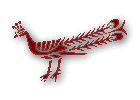 |
|
| ISSN 1084-7553 | |
| IJTS Vol. 1, No. 2 November 1995 |
|
| Editorial Note | |
| The Dance of... | |
| Setting | |
| The Tradition... | |
| The Guru... | |
| The Guru... | |
| The Tenth Day... | |
| The Eight Aspects... | |
| Conclusion... | |
| Computer Space | |
| News | |
| Letters | |
| Support The IJTS |
|
|
|
|
| Search |
|
| Register |
|
| Create Your Profile | |
| Recover Password | |
| Log In |
|
| Institutional Sub |
|
| none | |
| by Cathy Cantwell |
|
The Guru mTshan brgyad 'chams. According to my informants in Rewalsar, the Guru mTshan brgyad 'chams - Dance of the Guru's Eight Aspects - was introduced by the great rNying-ma-pa gter-ston, Guru Chos-kyi dBang-phyug (1212-70) or Guru Chos-dbang for short.20 In meditation, he visited Zangs mdog dpal ri (The Glorious Copper-coloured Mountain), the Buddha-field21 of Guru Padma, and he observed the DAkas, DAkinIs, and various forms of the Guru, dancing. When he "returned" to the ordinary level of experience, he taught the dances, which became very popular in Tibet; they were performed in many rNying-ma-pa monasteries, and also in some bKa'-rgyud-pa monasteries. Based on Guru Chos-dbang's teaching, the order and the steps of the dances of the Guru's aspects are the same in each case, and although there are slight variations in the decorations of the costumes, each aspect has his characteristic features and is clearly recognisable. There is no dance manual associated with the dance, but the tradition is orally preserved. The Guru always "manifests" in this dance on the tenth day of the moon, the time when, according to the "myth", Guru Padma promised to return and to be present in person.22 In the VajrayAna, the tenth day is considered to display the energy of the male heruka (wrathful deity);23 Guru Padma can be seen as the enlightened heruka par excellence, and throughout the year, Guru Padma Tshogs24 offerings are performed on the tenth day. [This is a preview of the full page; if you are a member of the Asiatica Association and have access to the IJTS, please login using the box on the left menu; non members: please become a member to support the Asiatica Association, and get full access to our publications.] |
|
©1995-2006 Asiatica Association. All Rights Reserved
site development L. Magnocavallo / site comments E. Garzilli |